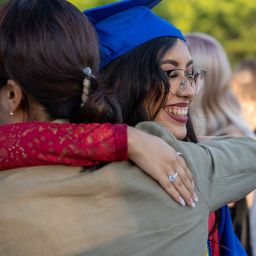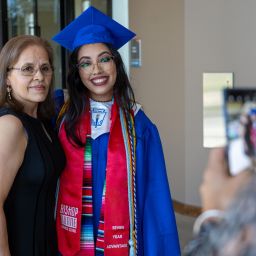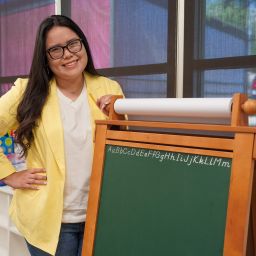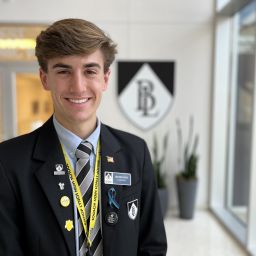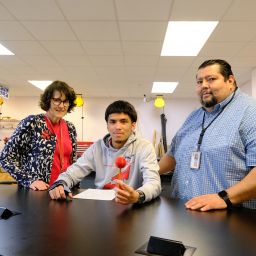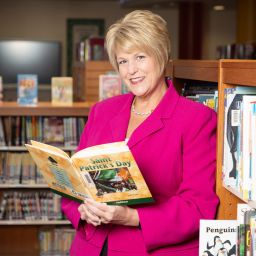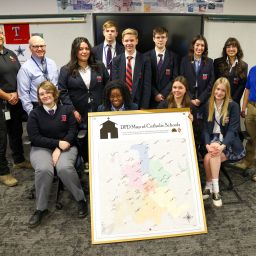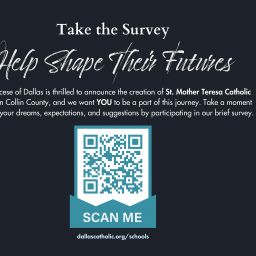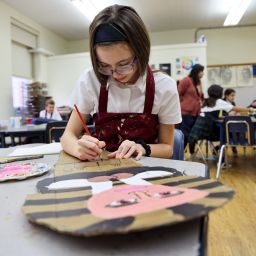
By Jeff Miller
Special to The Texas Catholic
Students at Bishop Dunne Catholic School have long benefitted from the technological expertise of instructors Brad Baker and David Beattie. The school’s recent $375,000 upgrade of the labs in which their classes are taught will take that advantage to a higher level.
The renovations to the school’s GeoTech and design/graphics labs were on display at a ribbon cutting reception on Sept. 7. Wielding the oversized scissors at the two classroom doors were Matt Kramer and Kara Gehan of The Catholic Foundation and Kelly Halaszyn, director of development for the Diocese of Dallas.
Their involvement was far beyond ceremonial. The upgrades became possible thanks to donations provided by the diocese through the Our Faith…Our Future Capital Campaign, The Catholic Foundation, the Hoblitzelle Foundation and one current Bishop Dunne family.
“We had the dream of this project to redo our labs,” school president Mary Beth Marchiony said before guests were given a tour of the labs. “With the generosity of donors, we were able to make that happen.
“With the setup and the new technology, we think the sky’s the limit.”
Christine Voigt, Bishop Dunne’s director of instructional technology, called the refurbished classrooms “flexible learning spaces, not just computer labs.”
“These are the same tools used in industry and the business world,” she said.
The tools found in Baker’s room, Voigt said, don’t simply allow students to “push these buttons and make pretty maps.” Students are solving real-world problems to benefit the greater community.
One example has been the St. Joseph Catholic Church Attendance Initiative, trying to help a diocesan parish restore its Mass attendance to a pre-pandemic level.
Elizabeth King, a senior who lives in Grand Prairie, has been involved with that, charting where active and non-active parishioners live.
“Maybe one member of the church can come and bring other members,” King said.
Baker said his previous computers were seven years old – “ancient by computer standards” Marchiony noted – and unable to run some of the optimal software.
“This grant gives us a chance to stay ahead,” Baker said.
Baker has had students involved in the community thanks to geographic information system (GIS) mapping during his entire 25 years at Bishop Dunne. He’d barely hung up his jacket in 1998 when they were aiding in water testing of Five Mile Creek. The current to-do list includes involvement in the Southern Gateway project that will result in a park above I-35E similar to Klyde Warren Park above Woodall Rodgers Freeway.
Beattie, who arrived at Dunne in 2000, said his room’s 9-year-old Macs were “approaching the end of life.” He said that became particularly problematic when students were attending remotely.
Much of the work done in Beattie’s design lab deals with computer graphics and gaming, and the upgrades included virtual reality equipment with four headsets. Voigt cited a huge increase now and even greater on the horizon in business and industrial usage, even surgeons doing practice simulations of operations.
Bishop Dunne parent Dorsey Martensen said daughter McClain, a 2019 grad, visited a university that offered her funding toward geophysics study. When McClain described what she’d already learned, she was told his high school program resembled the college’s master’s offering.
“These programs set our kids apart,” Martensen said.

